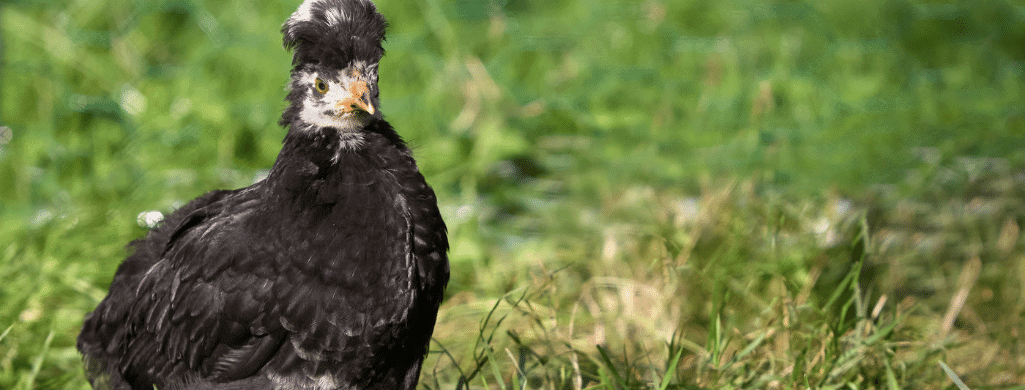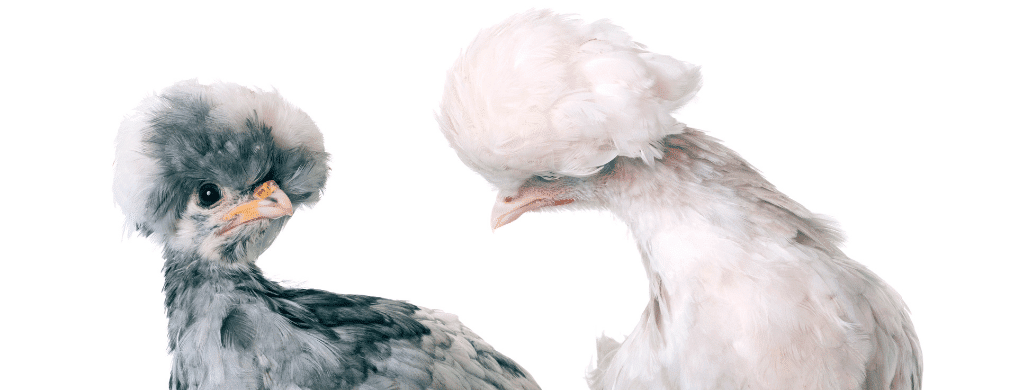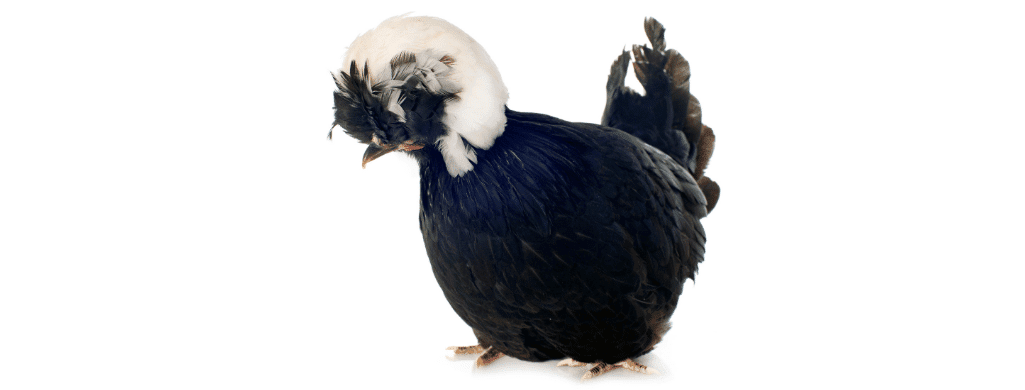When considering what breed of poultry to add to your backyard flock, noise is an important factor to consider.
You don’t want noisy birds who will wake you up early or disturb your neighbors.
Polish chickens crow and fall in the middle regarding how noisy they are. However, there are ways to prevent or decrease the disturbances caused by crowing.
Keep reading to learn more about why chickens crow, how to prevent crowing, and when Polish chickens mature.

Table of Contents
ToggleHow Loud Are Polish Chickens?
All roosters have the ability to crow, although certain breeds and individuals are less noisy than others.
Polish chickens are medium-loud birds, ranking around 6.5/10 in the noise level for chickens.
Likewise, Polish chickens’ crowing is in the medium range as well. They aren’t the quietest breed, but they aren’t the loudest.
A cock-a-doodle-doo is iconic.
Everyone knows what crowing sounds like, even if they’ve never been on a farm with chickens.
As you’ve seen in the movies, roosters typically crow early in the mornings.
Related Reading: Telling If Polish Chicken Is A Rooster Or A Hen
Why Do Roosters Crow?
The average rooster crow is 90 decibels, which is louder than a dog’s bark. In other words, they are pretty loud.
Why is this? Modern chickens’ origins trace back to jungles in Asia.
Without being able to see far through the dense jungle, these birds needed a loud way to call to each other.
Now, there are a few different reasons why beloved chickens crow. First, it’s used as a way to establish the pecking order or flock hierarchy.
The dominant rooster crows first in the morning, and roosters lower in the order wait to crow until he is done. If they crow first, it’s a challenge to the dominant rooster.
Most importantly for the roosters, it’s a way to attract a mate. The first and loudest roosters have a higher chance of successfully attracting a hen.
It also serves as a way to keep the whole flock together and warn outsiders away from the flock.
Free range chickens are more likely to crow as the roosters feel the need to protect the spread out flock a little more.
Further Reading: Can Polish Chickens Free Range Feed?
When Do Roosters Start Crowing?
Roosters typically start crowing when they are around four or five months old. Sometimes, they might wait until they are as old as eight months old before they start crowing.
Do Hens Crow?
Chicken hens can make a noise similar to crowing, but it isn’t as loud or as clear. Hens don’t typically crow.
When they do, it is often accompanied by bullying and other alpha behavior. A calm chicken usually doesn’t crow.
The egg song is the most common sound from a Polish hen.
This is a series of chatters and clucks telling the flock they’re getting ready to lay.

How to Prevent Crowing In Polish Chickens
Noisy roosters are annoying, and your neighbors won’t like it if your rooster is crowing at dawn.
First, brush up on local rules and regulations if you live in the suburbs or town. Not all city ordinances allow roosters.
Knowing the reasons why a rooster crows helps find ways to prevent it.
As we covered earlier, some of these reasons involve competing with other males and keeping the flock together.
Having a single rooster cuts down on one reason for this loud behavior.
Keeping the entire flock in an area so they can see each other cuts reduces the other reason roosters crow.
This is hard with curious chickens, but a covered run keeps them in one place.
To prevent crowing, your two main options are using a no-crow collar or keeping the problematic rooster confined during his usual crowing time.
No-Crow Collars
To produce loud crows, chickens must expand their throats and expel air quickly.
No-crow collars stop them from being able to do this. However, if the collar is the proper size, this won’t affect the bird’s ability to eat and drink.
While this doesn’t completely stop the action, it makes it quieter. Some backyard chicken owners have made their own DIY collars.
However, the original No-Crow collars and newer brands have great reviews.
Reducing Loud Noise
Since most crowing happens during sunrise or the early morning hours, reducing noise levels at this time is your main priority.
Lock the problematic fowl in his coop during this time. It’s easier to lock him in overnight and keep him in until later in the morning.
As long as you have an insulated coop, this will prevent him from annoying your neighbors — and yourself.
The thick foam absorbs sound and makes the coop soundproof. If your rooster is still too loud, confine him in a smaller area in the coop.
He can’t be as loud if he can’t fully stand up.

When Do Polish Chickens Mature?
Crowing behaviors typically start when a rooster matures. Likewise, a temperamental hen may also crow occasionally after she reaches maturity.
Polish chickens reach maturity around 18 to 20 weeks, which is 4 to 5 months old. At full size, they are still on the medium to a smaller size.
They also come in a Bantam size.
- Polish roosters: 6 pounds
- Polish hens: 4.5 pounds
- Bantam roosters: 1.8 pounds
- Bantam hens: 1.6 pounds
Related: Polish Roosters Vs. Hens
This chicken breed has an average lifespan of 4 to 7 years.
While they are mostly considered ornamental breeds and come in various colors, hens also have decent egg production.
These beautiful birds will begin laying when they reach 20 to 24 weeks of age. From there, they will produce an average of 110 eggs in a year or roughly 3 eggs per week.
This is nowhere near the 300 eggs of Rhode Islands and other reliable egg layers. However, they are average size and white in color, so they are still great eggs.
Polish hens are not particularly broody, so don’t expect too many baby chickens from them. Once a hen stops laying, she remains a pretty chicken for the flock.
With their small size, they are not great for meat.
As a Polish chick, it is hard to distinguish between a male and a female. Once they reach maturity, it is much easier to tell them apart.
One of the Polish poultry’s iconic features is its distinctive feather crest.
These crown feathers are different between males and females. For roosters, the crest has a more upright appearance.
It is also messy and wild in comparison, with pointed feathers. For hens, it is smoother and more of a bob shape. Additionally, hens have shorter tails.
Their crest of feathers gives them more than just an unusual appearance. Special consideration needs to be taken to reduce the risk from predators.
The head feathers obstruct their vision, making it hard for them to spot threats. Responsible chicken owners will make sure they are safe.
Polish chickens tend to bob their heads more too for this reason.
Further Reading: Why do chickens bob their heads?
When it comes to the temperament of these inquisitive birds, hens are calmer and friendlier. This is true of most breeds.
While a Polish flock is a gentle bird group overall, there will be the occasional aggressive rooster.
Finally, of course, there is a difference in common noises. Roosters will have a bellowing crow in the mornings, while hens typically stick to clucking.
How useful was this post?
Click on a star to rate it!
We are sorry that this post was not useful for you!
Let us improve this post!
Tell us how we can improve this post?
